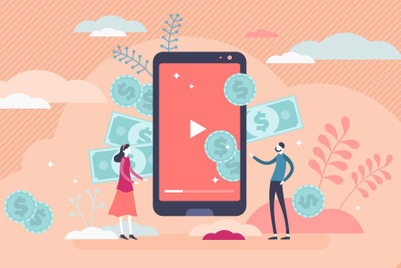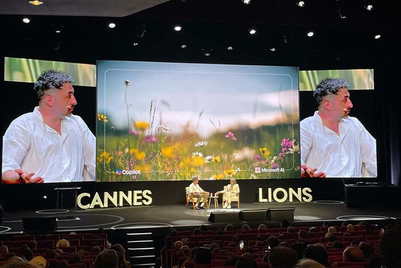YouTube isn’t just the
world’s biggest media platform—it’s the world’s biggest stage, screen, classroom, and entertainment hub rolled into one. It has more users worldwide than any other video or social-media platform. Meanwhile, in Southeast Asia, it’s practically universal as more than eight out of 10 people online use the platform every single day, according to May 2024 internal data from YouTube.
Users across all ages come to YouTube for one very simple reason—they simply can’t find the same breadth and depth of content anywhere else. Whether as a source for entertainment, news, learning, tips, hacks, or recipes, users flock to YouTube for its sheer variety and quality of content. It's become an integral component of so many people's lives. Today, more than
500 hours of content are uploaded on YouTube every minute globally. That’s the equivalent of a Netflix-worth of content being created every one hour and 12 minutes.
The engine behind these uploads is a vast and varied creator ecosystem. Creators give viewers endless entry points into pop culture, entertainment, and education by way of offering up diverse content such as sports analysis, fan theories, podcast recaps, glossy recipe videos, and get-ready-with-me content. And these vary from seconds-long quick hits to hours-long livestreams.

Source: Tubular Labs, Indonesia (2024)
The secret sauce of YouTube creators—influence
Creators have been building hyperlocal content for audiences in countries like Vietnam, Thailand, Indonesia, and the Philippines for over a decade, long before platforms like TikTok even existed. Over the years, these creators on YouTube have formed a deep understanding for what audiences in these markets like, care about, and react to. They then take this understanding and develop relatable content to delight users, build authentic connections, and convert them into fans. Fans who keep coming back.
Take
Mark Wiens—globetrotting food vlogger turned household name who has amassed over 11 million subscribers over 16 years. Or Thai rapper Milli, who launched her debut single ‘Pak korn’ on YouTube in February 2020, garnering 96 million views and ultimately leading to her becoming the first Thai performer at YouTube Coachella and winning a spot on
BBC’s list of 100 most Influential Women of 2022.
Today, Southeast Asia’s most influential voices are on YouTube. In fact, according to an Ipsos survey, online users are 98% more likely to trust the recommendations of creators on YouTube compared to those on other social sites or apps.
And the platform’s influence is growing. Today, there are 5,000 channels across Southeast Asia with more than a million subscribers. And uploaded content is
growing by 85% YoY in markets like Indonesia and Vietnam.
Why brands win on YouTube
With the rise of video commerce, users are increasingly looking to creators they trust for advice before making purchasing decisions.
What makes creators on YouTube different from those on other platforms is that they are not ‘salespeople’ but instead trusted advisors to fans who come to them to discover, learn, and seek advice. Brands who are able to tap into this influence and authentic connection are best suited to drive positive results.
Research shows ads that appear within or alongside creator-driven content
drive stronger results at every stage of the consumer journey, compared with ads viewed alongside noncreator content. More specifically, ads next to or within creator content yielded 1.23x higher research and consideration, 1.42x higher loyalty, and 1.3x higher advocacy.
Beyond creator trust, the wide and deep range of unique content on YouTube attracts a rich audience that can’t be found anywhere else.
Research shows that 40% of Shorts users in the US aren’t even on TikTok or Instagram Reels—that’s pure white space for marketers. Collectively, these attributes are what enable brands to see better long-term results on the platform. According to a
Nielsen finding, YouTube delivers higher long-term ROAS than TV (1.9x), online video (2.1x), and paid social (2.3x).
How to tap into the creator network
There are a range of tools brands can use to tap into the powerful creator ecosystem within the YouTube platform. For example, BrandConnect is a self-service platform that allows creators and brands to come together on branded campaigns. Partnership ads allow brands to use organic creator videos in ad campaigns, create data segments for campaign audience optimisation, and provide access to organic view metrics for linked videos.
When it comes to the creative legwork, YouTube can help brands source relevant creators to produce and promote creator-led content. And thanks to YouTube’s Shopping Affiliate Program, creators can tag products directly in their videos, making it effortless for viewers to watch and buy in the same breath.
|
HOW GEN Z AND MILLENNIALS BOOKED INTO TIKET.COM
Indonesian travel app Tiket.com launched a rebranding campaign to consolidate its status as the go-to platform for affordable travel. The brand needed to effectively reach and resonate with Gen Z and millennial audiences amid a crowded digital landscape, and it did so through a collaborative creator strategy.
Tiket partnered with diverse macro and micro influencers to offer their followers discounts as well as YouTube Partnership Ads by strategically targeting YouTube Shorts viewers and the followers of creators, including those not yet using Tiket.com. YouTube Shorts was a priority for Tiket because Gen Zs and millennials are known to be key consumers of creator content in the short-form format.
As a result, the campaign gained 9.1 million unique users in just 11 days with a majority of demographics made up by Gen Zs and millennials. The campaign also achieved a 13% rate in engagement, doubling the 6% average on other social media. This goes to show that YouTube’s ad solutions can effectively boost brands’ creator strategies—ticking key demographic boxes along the way.
|
Celebrating the best of brand-creator partnerships
The annual YouTube Works Awards Southeast Asia, which will mark its third edition in 2025, is a yardstick of excellent work among brands. Each year, a panel of esteemed judges gather to judge local and regional entries, culminating in a grand prize-giving ceremony. Brands that are especially adept at leveraging the power of YouTube creators are encouraged to apply to the ‘Brand & Creator’ category.
Last year’s jury lead for this category, Unilever’s Dennis Perez, said that it’s
important for brands and creators to share a common purpose of working together on a campaign. “Once [brands] pick the right creator, it’s important to ensure the freedom of the creator to tell their story. [Creators] are on YouTube because of their authentic voices and brands should respect that,” said Perez. “We’re now reaching a future of content and marketing where everyone can be a creator. And it will be a very good challenge for marketers to be able to weave their brand into creators’ stories effectively.”
Hence, YouTube isn’t just where creators go—it’s where culture starts, where trends explode, and where brands get real results. And in a creator-led world, YouTube isn’t just a nice-to-have. It’s where marketing meets magic. So the question for brands isn’t if they should get on YouTube. It’s how fast they can get started.
To learn more about YouTube Works Awards, click here. Submissions are open until May 13.
Cynthia Lam is head of video solutions at Google Southeast Asia.




.jpg&h=334&w=500&q=100&v=20250320&c=1)



.png&h=334&w=500&q=100&v=20250320&c=1)



.png&h=334&w=500&q=100&v=20250320&c=1)





.png&h=268&w=401&q=100&v=20250320&c=1)
.png&h=268&w=401&q=100&v=20250320&c=1)

